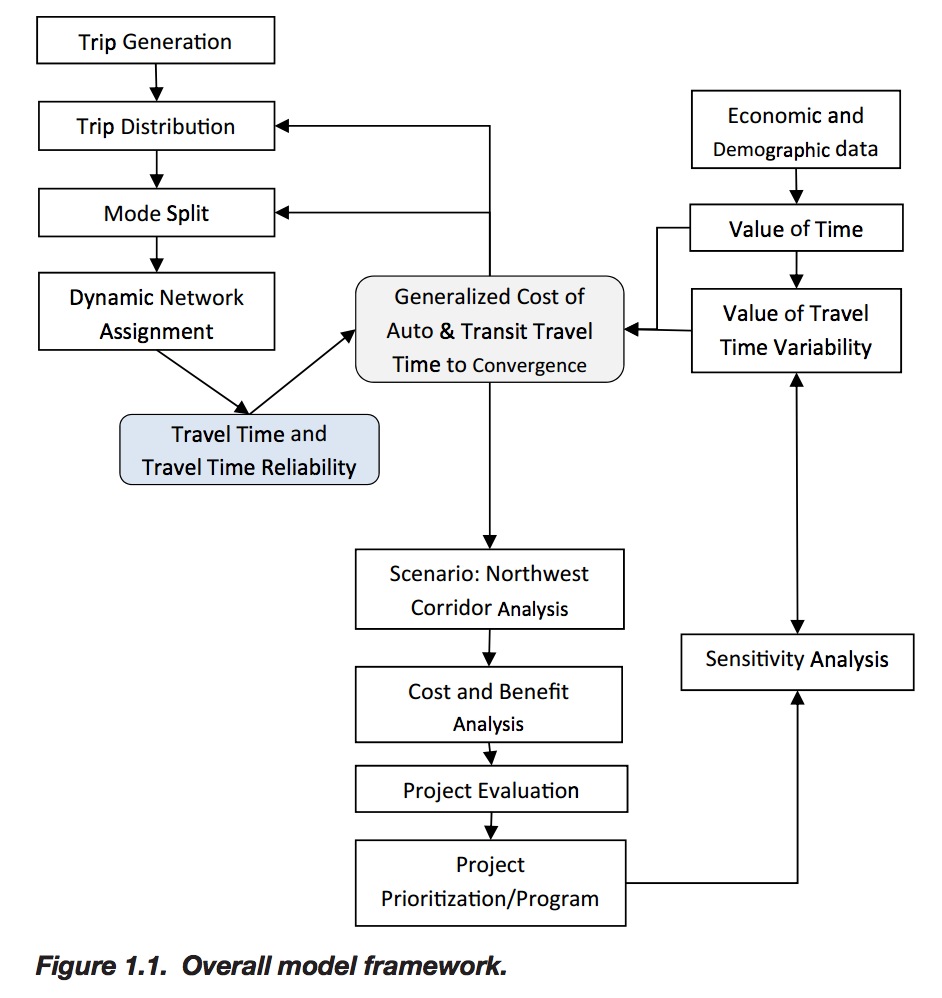TRANSPORTATION RESEARCH BOARD
Executive Summary
The objective of the second Strategic Highway Research Program (SHRP 2) Reliability Project L35A, The Estimation and Use of Value of Travel Time Reliability for Multi-Modal Corridor Analysis, is to demonstrate viable local methods for estimating reliability measures, as well as the economic value of travel time reliability that is agreeable to the local modeling and policy group within a context of transportation decision making.
The principal research activities include (1) increasing policy makers’ situational awareness through a workshop engagement (the first one), (2) obtaining a value of travel time reliability that is locally acceptable for the demonstrative nature of this project, (3) applying such a value to an integrated regional travel demand model and dynamic traffic and transit assignment modeling approach, (4) setting up and evaluating a wide range of scenarios, and (5) presenting the research findings to the same policy groups, obtaining feedback and comments regarding the overall modeling exercise and assessments of potential future use of reliability in actual project analysis.
The Portland Metro policy group to adopt a simplified stated-preference method via an online survey to estimate the reliability ratio (RR) that can be used to estimate the value of travel time reliability. Although this is a highly simplified method, the estimated RR value appears to be comparable with the literature and was confirmed to be acceptable for further project scenario modeling activities.
To better account for the time-varying nature of traffic dynamics and to further leverage the prior SHRP 2 research products, the research team applied the state-of-the-art network models to better capture the needed sensitivity with respect to reliability. The research team integrated Metro’s trip-based travel demand model with the dynamic traffic assignment model DynusT (for Dynamic Urban Systems for Transportation) and the dynamic transit assignment model FASTTrIPs (for Flexible Assignment and Simulation Tool for Transit and Intermodal Passengers) in this project. Both of the latter models were based on the research products associated with the SHRP 2 C10B project. SHRP 2 L35A is the first project that is able to demonstrate successfully the feasibility of integrating the network models from SHRP 2 C10B with a trip-based model.
More than 10 scenarios were identified and modeled in this project. The analysis results indicate that both bus rapid transit and variable message signs contribute to improved reliability for the Southwest Corridor when the performance over multiple modes and facilities is being considered. Bus rapid transit contributes to improved corridor performance by increased ridership due to higher reliability, and variable message signs contribute to improved corridor reliability by balancing the arterial and freeway flow via information dissemination.
Such modeling processes and results were fully presented and discussed at the second workshop with the Metro policy group. The policy group members concluded that incorporating reliability into the overall scenario and project analysis helped them to better understand the potential benefit of studied strategies that could not be otherwise realized within the traditional method.
Download full version (PDF): Value of Travel Time Reliability in Transportation Decision Making
About the Transportation Research Board
www.trb.org
The mission of the Transportation Research Board is to provide leadership in transportation innovation and progress through research and information exchange, conducted within a setting that is objective, interdisciplinary, and multimodal.
Tags: National Academies, OR, Oregon, Portland, SHRP, Strategic Highway Research Program, Transportation Research Board, TRB, TRB of NA







 RSS Feed
RSS Feed